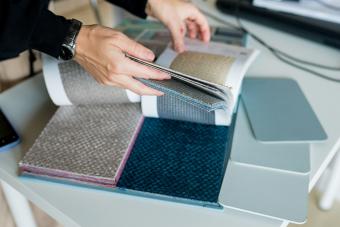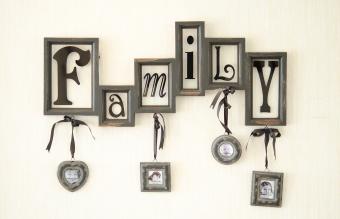
Creating a monochromatic color scheme is the easiest way to get that coveted pulled-together look in your home. Using the color wheel, and a little color theory, to design your color palette gives you several options for creating a gorgeous scheme. A monochromatic color scheme is simple to create because it starts with just one color. So easy!
What Is a Monochromatic Color Scheme?
The simplest definition of a monochromatic color scheme is a palette of colors created from a single hue. Using black, white, and gray, the single hue is joined by its shades, tones, and tints, to complete the color scheme. By varying the colors from a single hue, it creates a relaxing and calming color palette for your home. Because your monochromatic color scheme contains dark and light colors, it can be used in any space.

*Designer tip: You'll often see the terms color scheme and color palette used interchangeably. Both terms can be used to describe a collection of colors, but often designers consider a color palette to be a more refined result of a color scheme. It's completely acceptable to use them interchangeably.
What Are Shades, Hues, Tones, and Tints?
Before you create your monochromatic color scheme, you'll want to know a few basic color theory terms to help you choose the right colors. Your scheme will start with just one color, but you'll need to know how to vary it to create a harmonious color palette. Though every shade, hue, tone, and tint, is called a color, there are simple distinctions that make them different.

- Shade: This one is easy to guess because of its name. A hue becomes a shade when black is added. The result is a darker color.
- Hue: It's a simple term for any color you see on the color wheel. Adding white, black, or gray, changes the hue.
- Tone: A tone is the result of adding black and white (which is a pure gray,) to a hue. The result is a muted color.
- Tint: Adding white to any hue creates a tint - the most recognizable tint happens when you add white to red, to get pink.
How to Create a Monochromatic Color Scheme
Because monochromatic means literally one color, that's where you'll start when creating your color scheme. The best monochromatic color schemes include all types of colors, based on the main color you choose.

- Main Color: Choose your main color. This is the color from which the rest of the palette flows.
- Shade: Adding a shade of your main color, which is a darker version, adds balance and is good for wood furniture and for flooring.
- Tint: A lighter version of your main color, which is a tint, can soften a dark color scheme and is perfect for wall color or upholstered furniture.
- Tone: By adding toned-down accents, you can create a relaxing color scheme for your space. A monochromatic color scheme that includes tones is perfect for a bedroom.
*Designer tip: Find monochromatic color inspiration in the paint store, by looking at paint color strips. Most color strips use shades and tints to create lighter and darker versions of one color.
Which Colors Work Best in a Monochromatic Color Palette?
While any color can be the basis for a monochromatic color scheme, some are monochromatic rock stars.

- Gray: This simple neutral color holds the key to unlimited variations in a monochromatic color palette. Whether you prefer a simple gray or greige, your options are endless.
- Brown: This neutral color is ever present in most homes in the form of flooring, furniture, and cabinetry. Building a color scheme around brown gives you the option of incorporating soothing hues of beige and off white.
- Blue: From navy to powder blue, this color has the unique power to be both soothing and refreshing. As most blues have either a green or violet undertone, be sure your accent colors share its undertone.
- Green: Emerald green creates a stunning base for a sophisticated monochromatic color palette. Because green is seen as both a warm and cool color, you have more leeway in choosing similar green colors and still be considered monochromatic.
*Designer tip: Even though you're creating a beautiful monochromatic color scheme, adding a few extra accent pieces in a different color can bring a little design drama to your palette.
Choosing the Right Color Palette for Your Home
Any decorating style can benefit from the harmony that monochromatic color combinations bring. As you're looking for color scheme inspiration, it's important to identify your decorating goals for the room before deciding on a palette. Once you know the vibe you'd like for your space, you can choose the best colors to make it a reality.







